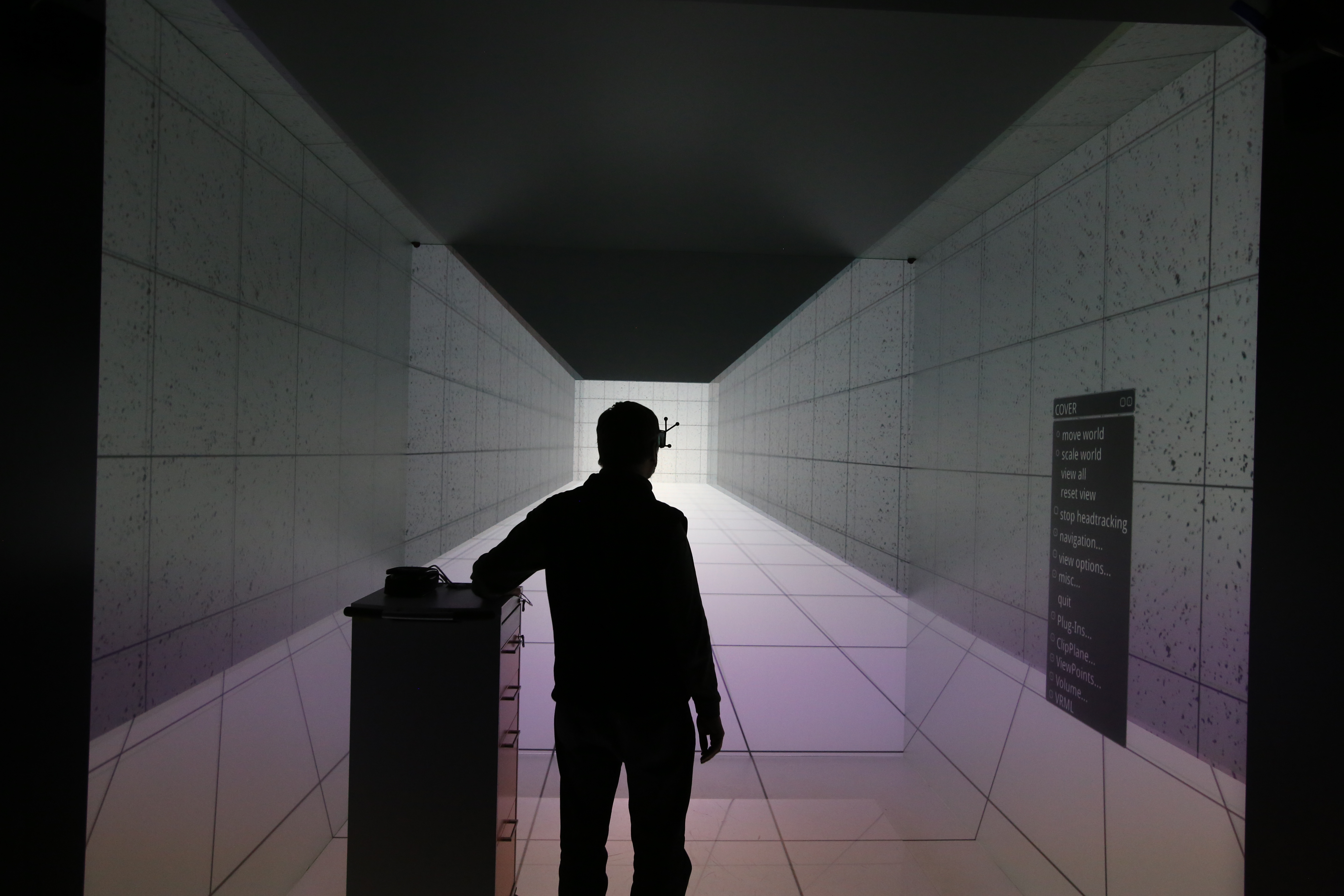Title : Space Perception in Virtual Environments
Project Lead : Sara Sara Eloy From : Instituto Universitrio de Lisboa (ISCTE-IUL) (Portugal)
Dates : from 2014-11-05 15:51:48 to 2015-01-26 10:00:35
Description :
Motivation and objectives :
Our research group Digital Living Spaces at ISTAR-IUL aims at performing objective studies of emotions induced by architectural spaces. In this scope we are performing several tests on users experiencing Virtual Environments (VE). We started by studying sensations close to fear of heights, claustrophobia, frustration and relief (Dias et al 2014a) we then focused on fear of falling (Dias et al 2014b) and are now preparing an experiment where we will study the impact of sound in space perception. My motivation on submitting a project to Visionair is to discuss our research, methodology and results with other experts in collaborative working while testing the same virtual environment and experimental conditions in different contexts. For that I would like to use Visionair facilities at HLPRS to perform an experiment on people emotions where the same VE we used before (Dias et al 2014b) would be ran at HLRS facilities. The VE we developed is a succession of architectural spaces in which people have to freely navigate. The assessment of emotions is done by two means: objective assessment by using heart rate sensors (if HLRS has this equipment), and subjective assessments by the declared perception using questionnaires. The differences between the experiment performed in Lisbon and in HLRS facilities could be: a) in the perception of fear in one or both the dependable variables (heart rate and declared perception, or just declared perception if heart rate sensors are not available) b) in the sense of presence and immersion (since HLRS facilities are different than ours) For this I would have to collect a sample of people (students e.g.) to do the experiments. We already know by now that these experiments with less than 30 persons are not considered statistically relevant to publish in good journals but since it's so difficult to have a large group it would be good if I could have e.g. 15. If navigate and interact through our 3d model would be possible with new interaction mode from HLRS, say tracking and haptic perception, it would be a very positive experience as well. The chosen of HLRS center within Visionair projet relates to the use of their CAVE facilities and other equipment e.g. the ART Trackpack optical tracking system and the e-Health Sensor Platform for an Raspberry Pi. I would also like to discuss the methodology we apply with other experts from the Faculty of Architecture and Civil Engineering at Hochschule RheinMain.
Teams :
Digital Living Spaces (DLS), one of the 4 research group of ISTAR-IUL, addresses the design of different types of environments for human use and exploration, including interactive digital tools and systems for human users, in conventional computing platforms, virtual and augmented reality. DLS also addresses architectural spaces supported by digital tools in their early design and conceptualization phases, or in their fabrication phases, allowing high standards of design and users satisfaction. Computer technologies have changed design, namely architecture, over the last decades by enabling the design process to be developed within a digital chain from draft to the final production
Dates :
starting date : 20 January, 2015
ending date : 24 January, 2015
Facilities descriptions :
http://visionair-browser.g-scop.grenoble-inp.fr/visionair/Browser/Catalogs/HLRS.GE.html
Recordings & Results :
The conducted work involved a first stage of preparation of the contents to run in the HLRS CAVE and to prepare the experiment. Second stage was the performance of individual experiments involving e.g. volunteer students from the campus. Even though the duration of the stay of the proposer has be shortend due to project end of VISIONAIR, 27 experiments were carried out.
Conclusions :
Even though the duration of the stay of the proposer has be shortend due to project end of VISIONAIR, 27 experiments were carried out. Data is now being analysed.
Project Images :

.

VISIONAIR / Grenoble INP / 46 avenue Felix Viallet / F-38 031 Grenoble cedex 1 / FRANCE
Project funded by the European Commission under grant agreement 262044

Project funded by the European Commission under grant agreement 262044
